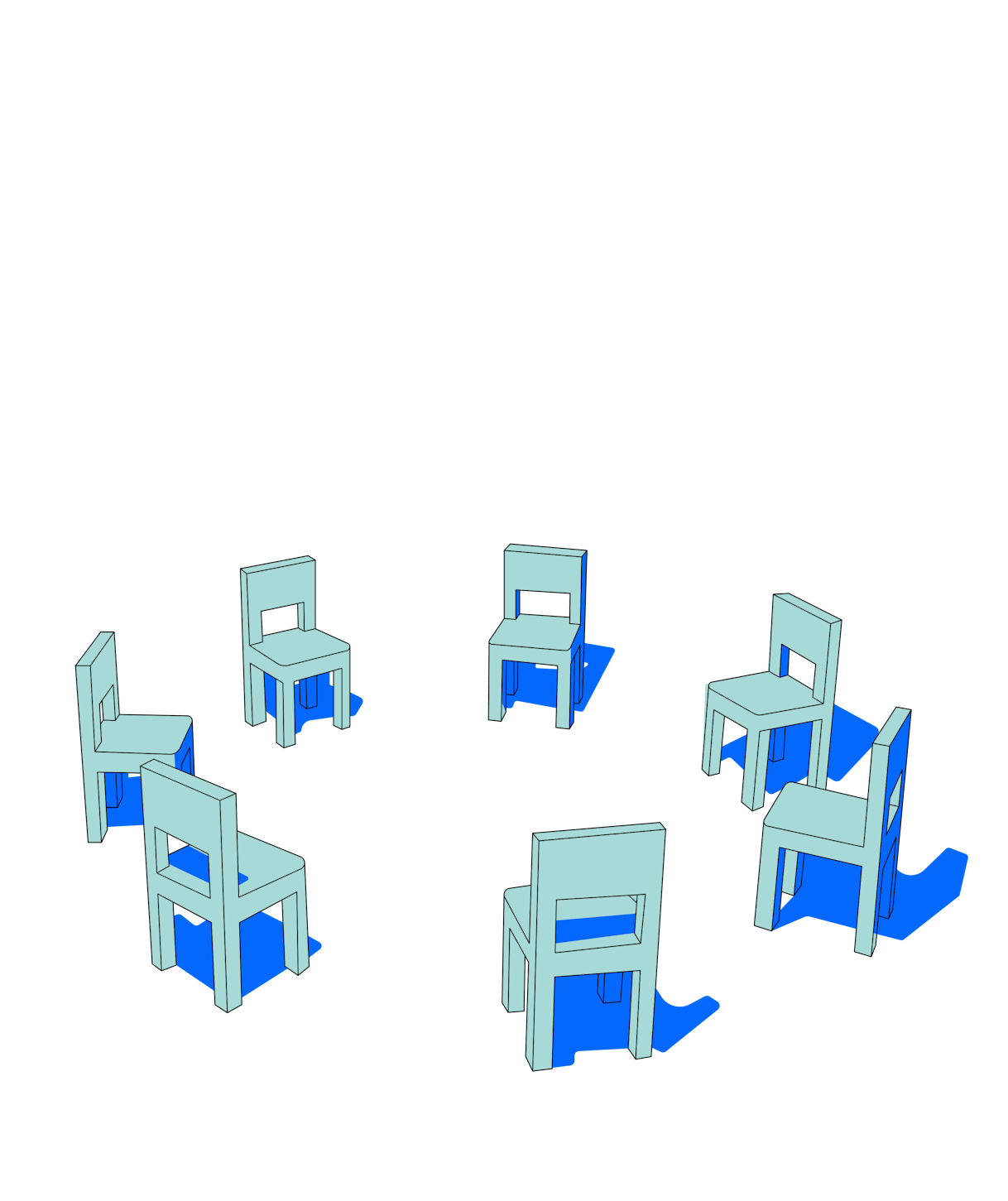Behind every what, there’s a why. Qualitative research is how you uncover that why. It enables you to connect with users and understand their thoughts, feelings, wants, needs, and pain points.
There’s many methods for conducting qualitative research, and many objectives it can help you pursue—you might want to explore ways to improve NPS scores, combat reduced customer retention, or understand (and recreate) the success behind a well-received product. The common thread? All these metrics impact your business, and qualitative research can help investigate and improve that impact.
In this article, we’ll take you through seven methods and examples of qualitative research, including when and how to use them.
7 Qualitative research methods: An overview
There are various qualitative UX research methods that can help you get in-depth, descriptive insights. Some are suited to specific phases of the design and development process, while others are more task-oriented.
Here’s our overview of the most common qualitative research methods. Keep reading for their use cases, and detailed examples of how to conduct them.
Method | What it is | When to use it | How to use it |
|---|---|---|---|
User interviews | A moderated UX research method that involves asking participants questions to understand their thoughts, perspectives, and feelings about your product or service. | During the discovery phase During the design phase Post-launch | Draft a list of questions based on your research goals, then connect with users one-on-one. Following the interview, review your data and pick out insights using thematic analysis. |
Focus groups | A moderated research method that involves asking questions to a group of five to ten users on a specific topic, such as their experience using your product. Unlike user interviews, focus groups include more than one participant at a time. | Throughout the product discovery phase When conducting market research Post-launch | Draft a list of questions to facilitate the discussion within the group and encourage active engagement.. After your focus group, review the data and conduct thematic analysis for descriptive insights. |
Ethnographic research | A moderated research method where you observe and interact with users in a real-life environment as they engage with your product. | Early concept development Initial design phase | Recruit users and then meet with them in their natural environment. Take field notes based on your observations and ask open-ended questions at the end of the session. |
Qualitative observation | A moderated research method where you observe your users interacting with your product in a natural or controlled environment. | Early concept development Initial design phase | Recruit users and then meet with them in a natural or controlled environment. Only take notes based on your observations rather than interacting directly with your users. |
Case study research | A moderated, holistic UX research method that provides comprehensive, contextual insights by studying a real-world case over a longer period. | When you need to track complex interactions over time When your product is innovative and you have little existing data on it Initial design phase Post-launch | Use a variety of qualitative UX research methods to track user opinions, thoughts, and attitudes over time. Synthesize your findings to gain descriptive insights and include them in a report. |
Secondary research | The process of collecting and analyzing existing resources like documents, records, and reviews that provide you with data on similar topics and users. | Initial discovery or exploration phase When your team is low on resources | Look for data on your product through online review websites, social media channels, and past UX research study reports. Analyze data for themes and patterns to gain descriptive insights. |
Open-ended surveys | An unmoderated UX research method that involves asking users a list of questions you’ve written to uncover specific user thoughts, feelings, pain points, and more. | When you’re conducting generative research When you need to understand customer satisfaction In combination with close-ended surveys | Draft a list of open-ended questions and distribute your survey to users. After receiving responses, conduct thematic analysis to extract descriptive insights. |
1. User interviews
A user interview is a one-on-one conversation between a UX researcher, designer or Product Manager and a target user to understand their thoughts, perspectives, and feelings on a product or service. User interviews are a great way to get non-numerical data on individual experiences with your product, to gain a deeper understanding of user perspectives.
Interviews can be structured, semi-structured, or unstructured. Structured interviews follow a strict interview script and can help you get answers to your planned questions, while semi and unstructured interviews are less rigid in their approach and typically lead to more spontaneous, user-centered insights.
When to use user interviews
Interviews are ideal when you want to gain an in-depth understanding of your users’ perspectives on your product or service, and why they feel a certain way.
Interviews can be used at any stage in the product design and development process, being particularly helpful during:
- The discovery phase: To better understand user needs, problems, and the context in which they use your product—revealing the best potential solutions
- The design phase: To get contextual feedback on mockups, wireframes, and prototypes, helping you pinpoint issues and the reasons behind them
- Post-launch: To assess if your product continues to meet users’ shifting expectations and understand why or why not
How to conduct user interviews: The basics
- Draft questions based on your research objectives
- Recruit relevant research participants and schedule interviews
- Conduct the interview and transcribe responses
- Analyze the interview responses to extract insights
- Use your findings to inform design, product, and business decisions
💡 A specialized user interview tool makes interviewing easier. With Maze Interview Studies, you can recruit, host, and analyze interviews all on one platform.
User interviews: A qualitative research example
Let’s say you’ve designed a recruitment platform, called Tech2Talent, that connects employers with tech talent. Before starting the design process, you want to clearly understand the pain points employers experience with existing recruitment tools'.
You draft a list of ten questions for a semi-structured interview for 15 different one-on-one interviews. As it’s semi-structured, you don’t expect to ask all the questions—the script serves as more of a guide.
One key question in your script is: “Have tech recruitment platforms helped you find the talent you need in the past?”
Most respondents answer with a resounding and passionate ‘no’ with one of them expanding:
“For our company, it’s been pretty hit or miss honestly. They let just about anyone make a profile and call themselves tech talent. It’s so hard sifting through serious candidates. I can’t see any of their achievements until I invest time setting up an interview.”
You begin to notice a pattern in your responses: recruitment tools often lack easily accessible details on talent profiles.
You’ve gained contextual feedback on why other recruitment platforms fail to solve user needs.
2. Focus groups
A focus group is a research method that involves gathering a small group of people—around five to ten users—to discuss a specific topic, such as their’ experience with your new product feature. Unlike user interviews, focus groups aim to capture the collective opinion of a wider market segment and encourage discussion among the group.
When to use focus groups
You should use focus groups when you need a deeper understanding of your users’ collective opinions. The dynamic discussion among participants can spark in-depth insights that might not emerge from regular interviews.
Focus groups can be used before, during, and after a product launch. They’re ideal:
- Throughout the problem discovery phase: To understand your user segment’s pain points and expectations, and generate product ideas
- Post-launch: To evaluate and understand the collective opinion of your product’s user experience
- When conducting market research: To grasp usage patterns, consumer perceptions, and market opportunities for your product
How to conduct focus group studies: The basics
- Draft prompts to spark conversation, or a series of questions based on your UX research objectives
- Find a group of five to ten users who are representative of your target audience (or a specific user segment) and schedule your focus group session
- Conduct the focus group by talking and listening to users, then transcribe responses
- Analyze focus group responses and extract insights
- Use your findings to inform design decisions
The number of participants can make it difficult to take notes or do manual transcriptions. We recommend using a transcription or a specialized UX research tool, such as Maze, that can automatically create ready-to-share reports and highlight key user insights.
Focus groups: A qualitative research example
You’re a UX researcher at FitMe, a fitness app that creates customized daily workouts for gym-goers. Unlike many other apps, FitMe takes into account the previous day’s workout and aims to create one that allows users to effectively rest different muscles.
However, FitMe has an issue. Users are generating workouts but not completing them. They’re accessing the app, taking the necessary steps to get a workout for the day, but quitting at the last hurdle.
Time to talk to users.
You organize a focus group to get to the root of the drop-off issue. You invite five existing users, all of whom have dropped off at the exact point you’re investigating, and ask them questions to uncover why.
A dialog develops:
Participant 1: “Sometimes I’ll get a workout that I just don’t want to do. Sure, it’s a good workout—but I just don’t want to physically do it. I just do my own thing when that happens.”
Participant 2: “Same here, some of them are so boring. I go to the gym because I love it. It’s an escape.”
Participant 3: “Right?! I get that the app generates the best one for me on that specific day, but I wish I could get a couple of options.”
Participant 4: “I’m the same, there are some exercises I just refuse to do. I’m not coming to the gym to do things I dislike.”
Conducting the focus groups and reviewing the transcripts, you realize that users want options. A workout that works for one gym-goer doesn’t necessarily work for the next.
A possible solution? Adding the option to generate a new workout (that still considers previous workouts)and the ability to blacklist certain exercises, like burpees.
3. Ethnographic research
Ethnographic research is a research method that involves observing and interacting with users in a real-life environment. By studying users in their natural habitat, you can understand how your product fits into their daily lives.
Ethnographic research can be active or passive. Active ethnographic research entails engaging with users in their natural environment and then following up with methods like interviews. Passive ethnographic research involves letting the user interact with the product while you note your observations.
When to use ethnographic research
Ethnographic research is best suited when you want rich insights into the context and environment in which users interact with your product. Keep in mind that you can conduct ethnographic research throughout the entire product design and development process—from problem discovery to post-launch. However, it’s mostly done early in the process:
- Early concept development: To gain an understanding of your user's day-to-day environment. Observe how they complete tasks and the pain points they encounter. The unique demands of their everyday lives will inform how to design your product.
- Initial design phase: Even if you have a firm grasp of the user’s environment, you still need to put your solution to the test. Conducting ethnographic research with your users interacting with your prototype puts theory into practice.
How to conduct ethnographic research:
- Recruit users who are reflective of your audience
- Meet with them in their natural environment, and tell them to behave as they usually would
- Take down field notes as they interact with your product
- Engage with your users, ask questions, or host an in-depth interview if you’re doing an active ethnographic study
- Collect all your data and analyze it for insights
While ethnographic studies provide a comprehensive view of what potential users actually do, they are resource-intensive and logistically difficult. A common alternative is diary studies. Like ethnographic research, diary studies examine how users interact with your product in their day-to-day, but the data is self-reported by participants.
⚙️ Recruiting participants proving tough and time-consuming? Maze Panel makes it easy, with 400+ filters to find your ideal participants from a pool of 3 million participants.
Ethnographic research: A qualitative research example
You're a UX researcher for a project management platform called ProFlow, and you’re conducting an ethnographic study of the project creation process with key users, including a startup’s COO.
The first thing you notice is that the COO is rushing while navigating the platform. You also take note of the 46 tabs and Zoom calls opened on their monitor. Their attention is divided, and they let out an exasperated sigh as they repeatedly hit “refresh” on your website’s onboarding interface.
You conclude the session with an interview and ask, “How easy or difficult did you find using ProFlow to coordinate a project?”
The COO answers: “Look, the whole reason we turn to project platforms is because we need to be quick on our feet. I’m doing a million things so I need the process to be fast and simple. The actual project management is good, but creating projects and setting up tables is way too complicated.”
You realize that ProFlow’s project creation process takes way too much time for professionals working in fast-paced, dynamic environments. To solve the issue, propose a quick-create option that enables them to move ahead with the basics instead of requiring in-depth project details.
4. Qualitative observation
Qualitative observation is a similar method to ethnographic research, though not as deep. It involves observing your users in a natural or controlled environment and taking notes as they interact with a product. However, be sure not to interrupt them, as this compromises the integrity of the study and turns it into active ethnographic research.
When to qualitative observation
Qualitative observation is best when you want to record how users interact with your product without anyone interfering. Much like ethnographic research, observation is best done during:
- Early concept development: To help you understand your users' daily lives, how they complete tasks, and the problems they deal with. The observations you collect in these instances will help you define a concept for your product.
- Initial design phase: Observing how users deal with your prototype helps you test if they can easily interact with it in their daily environments
How to conduct qualitative observation:
- Recruit users who regularly use your product
- Meet with users in either their natural environment, such as their office, or within a controlled environment, such as a lab
- Observe them and take down field notes based on what you notice
Qualitative observation: An qualitative research example
You’re conducting UX research for Stackbuilder, an app that connects businesses with tools ideal for their needs and budgets. To determine if your app is easy to use for industry professionals, you decide to conduct an observation study.
Sitting in with the participant, you notice they breeze past the onboarding process, quickly creating an account for their company. Yet, after specifying their company’s budget, they suddenly slow down. They open links to each tool’s individual page, confusingly switching from one tab to another. They let out a sigh as they read through each website.
Conducting your observation study, you realize that users find it difficult to extract information from each tool’s website. Based on your field notes, you suggest including a bullet-point summary of each tool directly on your platform.
5. Case study research
Case studies are a UX research method that provides comprehensive and contextual insights into a real-world case over a long period of time. They typically include a range of other qualitative research methods, like interviews, observations, and ethnographic research. A case study allows you to form an in-depth analysis of how people use your product, helping you uncover nuanced differences between your users.
When to use case studies
Case studies are best when your product involves complex interactions that need to be tracked over a longer period or through in-depth analysis. You can also use case studies when your product is innovative, and there’s little existing data on how users interact with it.
As for specific phases in the product design and development process:
- Initial design phase: Case studies can help you rigorously test for product issues and the reasons behind them, giving you in-depth feedback on everything between user motivations, friction points, and usability issues
- Post-launch phase: Continuing with case studies after launch can give you ongoing feedback on how users interact with the product in their day-to-day lives. These insights ensure you can meet shifting user expectations with product updates and future iterations
How to conduct case studies:
- Outline an objective for your case study such as examining specific user tasks or the overall user journey
- Select qualitative research methods such as interviews, ethnographic studies, or observations
- Collect and analyze your data for comprehensive insights
- Include your findings in a report with proposed solutions
Case study research: A qualitative research example
Your team has recently launched Pulse, a platform that analyzes social media posts to identify rising digital marketing trends. Pulse has been on the market for a year, and you want to better understand how it helps small businesses create successful campaigns.
To conduct your case study, you begin with a series of interviews to understand user expectations, ethnographic research sessions, and focus groups. After sorting responses and observations into common themes you notice a main recurring pattern. Users have trouble interpreting the data from their dashboards, making it difficult to identify which trends to follow.
With your synthesized insights, you create a report with detailed narratives of individual user experiences, common themes and issues, and recommendations for addressing user friction points.
Some of your proposed solutions include creating intuitive graphs and summaries for each trend study. This makes it easier for users to understand trends and implement strategic changes in their campaigns.
6. Secondary research
Secondary research is a research method that involves collecting and analyzing documents, records, and reviews that provide you with contextual data on your topic. You’re not connecting with participants directly, but rather accessing pre-existing available data. For example, you can pull out insights from your UX research repository to reexamine how they apply to your new UX research objective.
Strictly speaking, it can be both qualitative and quantitative—but today we focus on its qualitative application.
When to use secondary research
Record keeping is particularly useful when you need supplemental insights to complement, validate, or compare current research findings. It helps you analyze shifting trends amongst your users across a specific period. Some other scenarios where you need record keeping include:
- Initial discovery or exploration phase: Secondary research can help you quickly gather background information and data to understand the broader context of a market
- Design and development phase: See what solutions are working in other contexts for an idea of how to build yours
Secondary research is especially valuable when your team faces budget constraints, tight deadlines, or limited resources. Through review mining and collecting older findings, you can uncover useful insights that drive decision-making throughout the product design and development process.
How to conduct secondary research:
- Outline your UX research objective
- Identify potential data sources for information on your product, market, or target audience. Some of these sources can include:
a. Review websites like Capterra and G2
b. Social media channels
c. Customer service logs and disputes
d. Website reviews
e. Reports and insights from previous research studies
f. Industry trends
g. Information on competitors - Analyze your data by identifying recurring patterns and themes for insights
Secondary research: A qualitative research example
SafeSurf is a cybersecurity platform that offers threat detection, security audits, and real-time reports. After conducting multiple rounds of testing, you need a quick and easy way to identify remaining usability issues. Instead of conducting another resource-intensive method, you opt for social listening and data mining for your secondary research.
Browsing through your company’s X, you identify a recurring theme: many users without a background in tech find SafeSurf’s reports too technical and difficult to read. Users struggle with understanding what to do if their networks are breached.
After checking your other social media channels and review sites, the issue pops up again.
With your gathered insights, your team settles on introducing a simplified version of reports, including clear summaries, takeaways, and step-by-step protocols for ensuring security.
By conducting secondary research, you’ve uncovered a major usability issue—all without spending large amounts of time and resources to connect with your users.
7. Open-ended surveys
Open-ended surveys are a type of unmoderated UX research method that involves asking users to answer a list of qualitative research questions designed to uncover their attitudes, expectations, and needs regarding your service or product. Open-ended surveys allow users to give in-depth, nuanced, and contextual responses.
When to use open-ended surveys
User surveys are an effective qualitative research method for reaching a large number of users. You can use them at any stage of the design and product development process, but they’re particularly useful:
- When you’re conducting generative research: Open-ended surveys allow you to reach a wide range of users, making them especially useful during initial research phases when you need broad insights into user experiences
- When you need to understand customer satisfaction: Open-ended customer satisfaction surveys help you uncover why your users might be dissatisfied with your product, helping you find the root cause of their negative experiences
- In combination with close-ended surveys: Get a combination of numerical, statistical insights and rich descriptive feedback. You’ll know what a specific percentage of your users think and why they think it.
How to conduct open-ended surveys:
- Design your survey and draft out a list of survey questions
- Distribute your surveys to respondents
- Analyze survey participant responses for key themes and patterns
- Use your findings to inform your design process
Open-ended surveys: A qualitative research example
You're a UX researcher for RouteReader, a comprehensive logistics platform that allows users to conduct shipment tracking and route planning. Recently, you’ve launched a new predictive analytics feature that allows users to quickly identify and prepare for supply chain disruptions.
To better understand if users find the new feature helpful, you create an open-ended, in-app survey.
The questions you ask your users:
- “What has been your experience with our new predictive analytics feature?"
- “Do you find it easy or difficult to rework your routes based on our predictive suggestions?”
- “Does the predictive analytics feature make planning routes easier? Why or why not?”
Most of the responses are positive. Users report using the predictive analytics feature to make last-minute adjustments to their route plans, and some even rely on it regularly. However, a few users find the feature hard to notice, making it difficult to adjust their routes on time.
To ensure users have supply chain insights on time, you integrate the new feature into each interface so users can easily spot important information and adjust their routes accordingly.
💡 Surveys are a lot easier with a quality survey tool. Maze’s Feedback Surveys solution has all you need to ensure your surveys get the insights you need—including AI-powered follow-up and automated reports.
Qualitative research vs. quantitative research: What’s the difference?
Alongside qualitative research approaches, UX teams also use quantitative research methods. Despite the similar names, the two are very different.
Here are some of the key differences between qualitative research and quantitative research.
Research type | Research methodologies | Analysis process | Sample size | Insight type |
|---|---|---|---|---|
Qualitative research | Interviews Ethnographic studies Case studies Focus groups | Analyze insights with qualitative analysis methods like thematic analysis, discourse analysis, and content analysis. | Requires fewer users to get a large amount of data. Aim for a minimum of five, as per the 5-user rule for user testing. | Gives you descriptive insights that help you form a better understanding of your users or a specific phenomenon. |
Quantitative research | Surveys with close-ended questions A/B testing Website analytics | Involves statistical analysis for identifying trends and patterns. | Needs a much larger user sample size to ensure generalizability. | Gives you broad numerical insights to understand inferences, draw comparisons, and identify trends. |
Before selecting either qualitative or quantitative methods, first identify what you want to achieve with your UX research project. As a general rule of thumb, think qualitative data collection for in-depth understanding and quantitative studies for measurement and validation.
Conduct qualitative research with Maze
You’ll often find that knowing the what is pointless without understanding the accompanying why. Qualitative research helps you uncover your why.
So, what about how—how do you identify your 'what' and your 'why'?
The answer is with a user research tool like Maze.
Maze is the leading user research platform that lets you organize, conduct, and analyze both qualitative and quantitative research studies—all from one place. Its wide variety of UX research methods and advanced AI capabilities help you get the insights you need to build the right products and experiences faster.
Frequently asked questions about qualitative research examples
What is qualitative research?
What is qualitative research?
Qualitative research is a research method that aims to provide contextual, descriptive, and non-numerical insights on a specific issue. Qualitative research methods like interviews, case studies, and ethnographic studies allow you to uncover the reasoning behind your user’s attitudes and opinions.
Can a study be both qualitative and quantitative?
Can a study be both qualitative and quantitative?
Absolutely! You can use mixed methods in your research design, which combines qualitative and quantitative approaches to gain both descriptive and statistical insights.
For example, user surveys can have both close-ended and open-ended questions, providing comprehensive data like percentages of user views and descriptive reasoning behind their answers.
Is qualitative or quantitative research better?
Is qualitative or quantitative research better?
The choice between qualitative and quantitative research depends upon your research goals and objectives.
Qualitative research methods are better suited when you want to understand the complexities of your user’s problems and uncover the underlying motives beneath their thoughts, feelings, and behaviors. Quantitative research excels in giving you numerical data, helping you gain a statistical view of your user's attitudes, identifying trends, and making predictions.
What are some approaches to qualitative research?
What are some approaches to qualitative research?
There are many approaches to qualitative studies. An approach is the underlying theory behind a method, and a method is a way of implementing the approach. Here are some approaches to qualitative research:
- Grounded theory: Researchers study a topic and develop theories inductively
- Phenomenological research: Researchers study a phenomenon through the lived experiences of those involved
- Ethnography: Researchers immerse themselves in organizations to understand how they operate






